FUE头发移植:手术过程和费用(马来西亚)
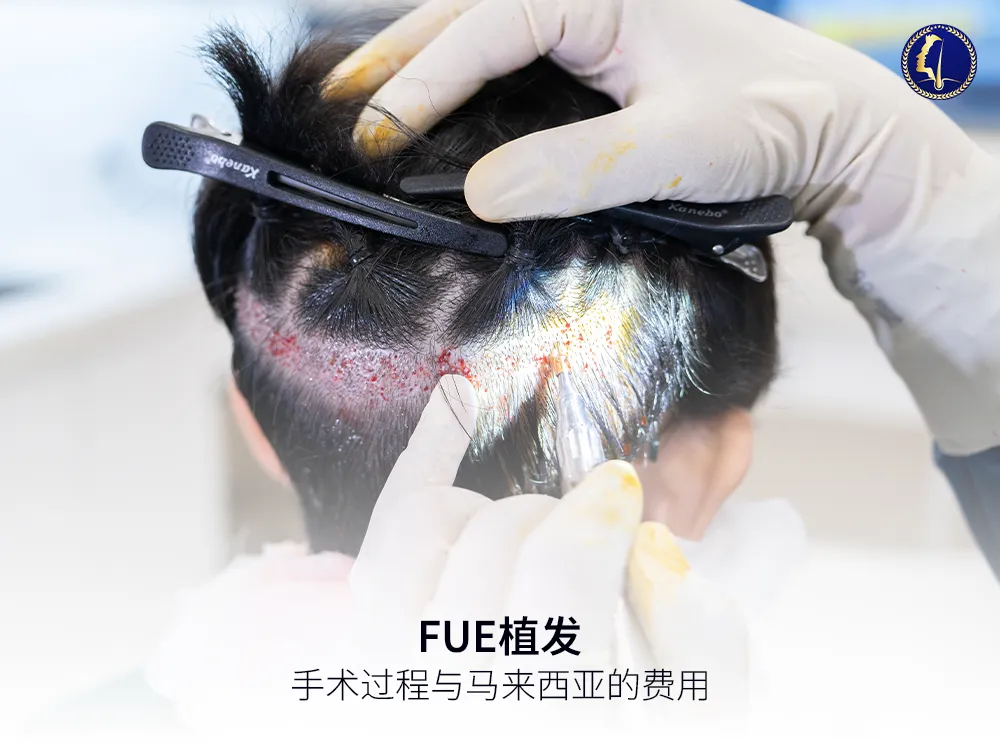
FUE头发移植:手术过程和费用(马来西亚) In Malaysian Chinese Mandarin, the translation would be: FUE头发移植:手术过程和费用(马来西亚) In Malaysian Chinese Mandarin, the translation would be: FUE头发移植:手术过程和费用(马来西亚) 植发概述 植发是一种外科手术,通过将健康区域的毛囊(通常是头皮的后部或两侧)移植到脱发或稀疏区域来帮助恢复毛发生长。主要目的是恢复头发的密度,并创造一个自然的发际线。这是处理秃发、头发稀疏或发际线后退问题的热门解决方案。 现代的植发技术是微创的,使得手术更安全、效果更好。这些技术能提供长期效果,移植后的毛囊所生长出的头发是永久的。 植发技术类型 植发主要有三种方法:智能FUE、标准FUE和FUT。每种方法在手术过程、恢复时间、疤痕和适用性上有所不同,取决于个人需求。 特点 智能FUE 标准FUE FUT(毛囊单位移植) 手术过程 使用先进工具进行精准提取 手动提取单个毛囊 从供体区切取一条头皮带进行毛囊提取 疤痕 微小,几乎不可见 微小,像小点的疤痕 供体区域线性疤痕 恢复时间 较短 中等恢复时间 由于切口,恢复较长 毛囊质量 高质量毛囊,损伤极小 毛囊质量取决于医生的技术 高质量毛囊,但更具侵入性 最适合 快速恢复,精准 侵入性较小,适合小面积植发 大规模毛囊移植,适用于严重脱发 植发过程 植发的手术过程通常包括以下几个步骤: 咨询:第一步是与外科医生进行深入咨询,讨论你的目标,评估头皮状况,并根据你的需求确定最合适的植发方法(智能FUE、标准FUE或FUT)。 准备:手术当天,医生会清洁头皮,并局部麻醉以减少不适感。在某些情况下,可能会提供镇静药物以增加舒适度。 提取: 对于FUE方法(智能FUE或标准FUE),使用专业工具从供体区域提取单个毛囊。 对于FUT,从供体区域切取一条头皮带,然后从该带中提取毛囊。 移植:将毛囊精确地植入脱发或稀疏区域,遵循自然的生长模式,以确保无缝效果。 术后护理:手术后,医生会提供护理指导,包括如何洗头、预防感染以及如何管理不适。 愈合:大多数患者可以在几天内恢复日常活动,但应避免剧烈运动,至少两周内避免。 结果:新头发生长通常会在3至4个月内开始,完全的效果在12至18个月后显现。 植发费用:马来西亚与土耳其、印度尼西亚比较 植发的费用因国家和技术的不同而有所变化。以下是以美元为单位的费用比较及其当地货币的转换。 国家 平均费用 转换为当地货币 主要特点 马来西亚 RM 7,500 – RM 18,750 实惠、高质量护理、英语服务的诊所 土耳其 TRY 41,250 – TRY 96,250 医疗旅游热门地,价格具有竞争力 印度尼西亚 IDR 18,000,000 – IDR 45,000,000 预算友好,植发技术日益成熟 马来西亚提供了一个理想的平衡,兼具实惠的价格、优质的护理和便利性,特别适合东南亚患者。 土耳其以其实惠的价格和大量国际患者而闻名,成为全球植发中心。 印度尼西亚在植发领域的专业水平日益增长,且价格更加亲民,正逐渐成为一个竞争力强的目的地。 植发的好处 永久效果:与假发或外用治疗等临时解决方案不同,植发能提供持久的效果。 自然外观:现代技术确保移植的头发与现有头发无缝融合,呈现自然外观。 提升自信:恢复浓密、年轻的发际线能提升自尊和生活质量。 可定制性:手术可以根据你的具体需求量身定制,无论是恢复后退的发际线,还是增加稀疏区域的发量。 5个常见问题(FAQ) 植发与发际线植发有什么区别? 植发恢复头发密度,覆盖更大的区域,而发际线植发则专门针对发际线,修复或填补后退的区域。 多久能看到效果? 头发生长通常在3到4个月内开始,完全的效果将在12到18个月后显现。 植发是永久的吗? 是的,移植的头发是永久的,因为它们对导致脱发的荷尔蒙具有抗性。然而,未经治疗的自然头发可能继续稀疏。 手术后需要休息吗? 大多数患者可以在3到7天内恢复正常活动。应避免剧烈运动,至少两周内避免。 女性也可以做植发吗? 是的,植发适用于因头发稀疏或秃发而困扰的男性和女性。 3000个毛囊的植发费用是多少? 3000个毛囊的费用因国家和使用的技术而异。平均费用如下: 马来西亚:RM 15,000 – RM 45,000 土耳其:TRY 85,000 – TRY 250,000 印度尼西亚:IDR 40,000,000 – IDR 120,000,000 2000个毛囊的植发费用是多少? 2000个毛囊的费用通常比大规模手术更为实惠,平均费用如下: 马来西亚:RM 10,000 – RM 30,000 土耳其:TRY 55,000 – TRY 180,000 印度尼西亚:IDR 25,000,000 – IDR 75,000,000 为什么马来西亚是脱发治疗的首选地? 马来西亚因其先进的诊所、熟练的外科医生和实惠的价格,迅速成为脱发治疗的热门目的地。它提供先进的技术,如智能FUE和标准FUE,以获得世界一流的效果。该国的医疗旅游业确保了国际患者的无缝体验,从旅行安排到术后护理。 结论 如果你正在考虑通过植发恢复发际线或解决头发稀疏问题,马来西亚提供了专业、实惠和尖端技术的完美结合。凭借高质量的护理和个性化的效果,你可以实现自然、持久的头发效果。
Hair Surgery Cost: A Guide to Affordable Options & Pricing
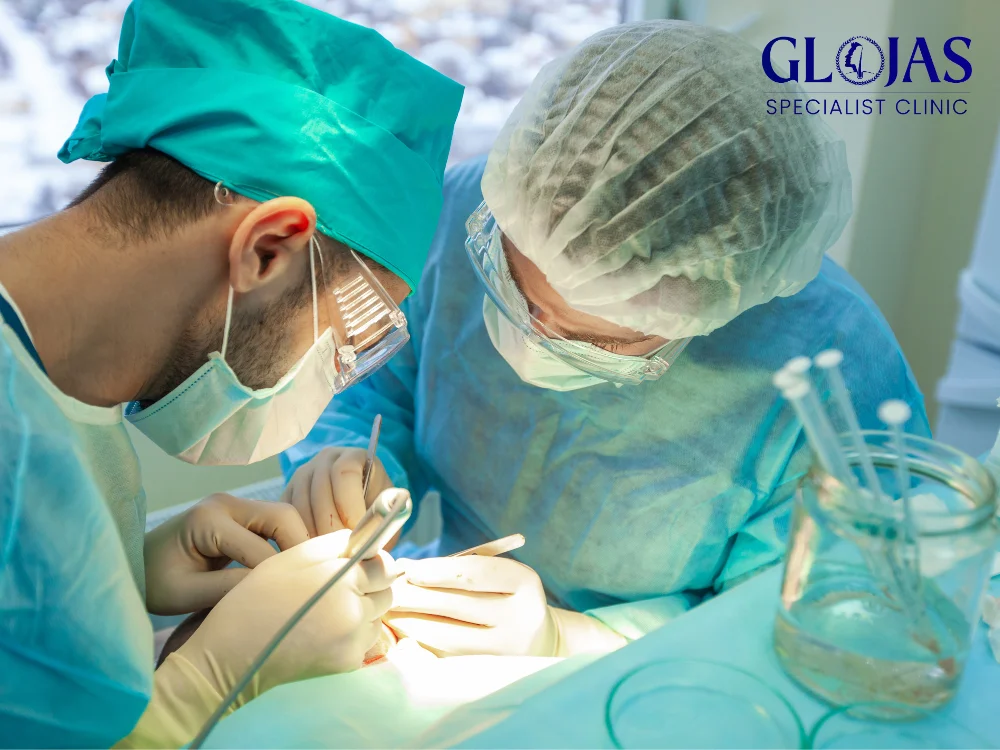
Hair restoration surgery has become a beacon of hope for those battling hair loss, offering a chance to regain confidence and achieve a natural, youthful appearance. However, for many individuals, the question of hair surgery cost can be daunting. In this guide, we’ll explore the ins and outs of hair transplant cost, factors that influence costs, and ways to make the procedure more affordable. What is Hair Surgery? Hair surgery, commonly referred to as a hair transplant, is a cosmetic procedure that involves moving hair follicles from one part of the body (the donor site) to areas experiencing hair thinning or balding (the recipient site). Two primary techniques dominate the field: FUT (Follicular Unit Transplantation): A strip of scalp is removed, and individual follicles are transplanted. FUE (Follicular Unit Extraction): Hair follicles are extracted individually, leaving minimal scarring. Both methods are effective but come with varying costs and recovery times. How Much Does Hair Surgery Cost? The hair surgery cost depends on numerous factors, ranging from the technique used to the geographic location of the clinic. On average, you can expect to pay between $4,000 and $15,000 for a hair transplant. Here’s a cost breakdown: Country Average Cost (USD) Comments United States $5,000 – $15,000 Higher due to advanced technology and expertise. Turkey $2,000 – $6,000 Popular for affordability and quality clinics. United Kingdom $5,000 – $12,000 Comparable to the U.S. in pricing. India $800 – $3,000 Cost-effective with skilled surgeons. Factors Influencing Hair Surgery Cost Several variables affect the pricing of hair transplant procedures. Let’s dive into these: 1. Number of Grafts Required Hair transplants are priced per graft, with each graft containing 1-4 hair follicles. Costs range from $2 to $10 per graft, depending on the clinic and location. For severe hair loss, requiring upwards of 3,000 grafts, the total expense can climb significantly. 2. Technique Used FUE: Typically more expensive due to its precision and minimally invasive nature. FUT: More affordable but involves a longer recovery time and potential scarring. 3. Location of the Clinic Clinics in countries with a high cost of living, like the U.S. or U.K., generally charge more. On the other hand, medical tourism hotspots like Turkey and Malaysia offer high-quality treatments at a fraction of the cost. 4. Experience of the Surgeon Highly experienced surgeons charge premium fees due to their expertise and track record. While tempting, it’s unwise to compromise on quality for cost savings when it comes to medical procedures. 5. Additional Costs The overall hair surgery cost isn’t limited to the procedure itself. Here are some other potential expenses: Consultation fees Post-operative medications Travel and accommodation (if opting for medical tourism) Follow-up appointments Is Hair Surgery Worth the Cost? For many individuals, the investment in hair restoration surgery pays off in terms of improved confidence and self-esteem. Unlike temporary solutions like wigs or topical treatments, hair transplants offer permanent, natural-looking results. However, it’s essential to evaluate whether the cost aligns with your budget and expectations. Thorough research and consultations can help determine if this procedure is right for you. How to Reduce Hair Surgery Cost Without Compromising Quality Opt for Medical Tourism: Countries like Turkey, Malaysia, and Mexico are renowned for affordable, high-quality hair transplant services. Choose Package Deals: Some clinics offer all-inclusive packages covering surgery, accommodation, and post-op care. Research Multiple Clinics: Compare prices and reviews to find a reputable clinic that fits your budget. Ask About Financing Plans: Many clinics offer payment plans to spread out the cost over several months. Start Small: If you’re on a tight budget, you might opt for a smaller number of grafts initially and expand later. Hair Surgery Cost: Comparing FUE vs. FUT Aspect FUE FUT Cost Higher ($4,000 – $15,000) Lower ($3,000 – $10,000) Scarring Minimal Linear scar Recovery Time Faster (7-10 days) Longer (10-14 days) Best For Individuals seeking precision Larger areas needing coverage Hair Surgery Cost vs. Alternatives While hair surgery is a long-term solution, alternatives like medication (e.g., Minoxidil, Finasteride), PRP therapy, or scalp micropigmentation can be more budget-friendly but require ongoing investment. Here’s a quick cost comparison: Treatment Cost Range Longevity Hair Transplant Surgery $4,000 – $15,000 Permanent PRP Therapy $300 – $1,000/session Requires multiple sessions Scalp Micropigmentation $2,000 – $4,000 Semi-permanent (4-6 years) Medications $30 – $50/month Temporary Questions to Ask Before Undergoing Hair Surgery What technique does the surgeon specialize in? How many grafts will I need for optimal results? What is the total cost, including aftercare? Are there financing options or discounts available? What results can I realistically expect? Frequently Asked Questions About Hair Surgery Cost 1. Why is hair surgery so expensive? The cost reflects the skill of the surgeon, advanced technology, and time-intensive nature of the procedure. Each graft is placed individually, requiring precision and expertise. 2. Does insurance cover hair surgery? In most cases, no. Hair transplants are considered a cosmetic procedure and aren’t covered by insurance plans. 3. Are cheaper options abroad safe? Yes, provided you research thoroughly. Countries like Turkey and India are home to accredited clinics with skilled surgeons. Always check for certifications and patient reviews. 4. How long do the results of hair surgery last? Hair transplants are permanent as the transplanted follicles are resistant to hair loss. However, natural thinning of non-transplanted hair may continue over time. 5. Can I negotiate the hair surgery cost? Some clinics are open to negotiation or may offer seasonal discounts, especially for medical tourists. It’s worth asking during your consultation. 6. What happens if I can’t afford a full hair transplant? You can explore alternatives like partial transplants, payment plans, or non-surgical treatments like PRP therapy or scalp micropigmentation. Conclusion Hair surgery, including hair transplants and hair restoration procedures, offers a transformative solution for individuals struggling with hair loss. By restoring a full head of hair, these procedures can significantly boost self-confidence and improve overall quality of life. While the cost of hair surgery can be a significant factor, it’s important to consider the long-term benefits. A successful hair transplant can provide a permanent solution to hair loss, eliminating the need for ongoing treatments or
Truth About Hair Implant Costs: 7 Key Insights You Need to Know

Hair implant cost – Hair loss can be a distressing experience, affecting both men and women. While it’s a natural part of aging for many, premature hair loss can significantly impact self-esteem and confidence. Hair implants, a surgical procedure that involves transplanting hair follicles from a donor area to a balding area, have emerged as a popular and effective solution to restore hair growth. However, one of the primary concerns for individuals considering hair implants is the cost. The price of hair implants can vary depending on several factors, including the extent of hair loss, the chosen surgical technique, the surgeon’s experience, and the geographic location of the clinic. In this comprehensive guide, we will delve into the factors influencing hair implant cost, explore the different types of hair transplant procedures, and discuss the potential return on investment. By understanding the intricacies of hair implant pricing, you can make informed decisions and achieve your hair restoration goals. What Is a Hair Implant? Hair implants, often referred to as hair transplants, are surgical procedures designed to address hair loss by moving hair follicles from one area of the scalp (or body) to areas with thinning or no hair. This technique offers a permanent solution compared to temporary alternatives like wigs or hairpieces. Methods of Hair Implants Follicular Unit Transplantation (FUT): Involves removing a strip of scalp from the donor area and dissecting it into individual grafts. Follicular Unit Extraction (FUE): Involves extracting individual hair follicles using a minimally invasive approach. Both methods have varying costs depending on the complexity and time required for the procedure. Factors That Influence Hair Implant Costs Understanding the hair implant cost requires considering several key factors: 1. Geographic Location The cost of hair implants varies significantly based on where you have the procedure. Clinics in metropolitan areas or countries with high healthcare costs may charge more than those in less expensive regions. 2. Type of Procedure FUE is generally more expensive than FUT due to its labor-intensive nature and advanced technology. However, it offers minimal scarring and faster recovery. 3. Number of Grafts Required The extent of hair loss determines how many grafts you need. Larger areas of baldness require more grafts, which increases the total cost. 4. Surgeon Expertise Highly experienced surgeons or those with a renowned reputation may charge premium rates for their services. 5. Clinic Facilities State-of-the-art clinics with advanced technology, luxurious amenities, and highly trained staff may charge higher fees. Average Hair Implant Costs Worldwide Hair implant costs can vary depending on the country or region. Below is a general overview: Country Average Cost per Graft Total Cost Range United States $4–$8 $5,000–$15,000 United Kingdom £2–£5 £3,000–£10,000 Turkey $1–$3 $1,500–$6,000 India ₹40–₹120 ₹50,000–₹2,00,000 It’s worth noting that the lower costs in countries like Malaysia or India are often due to differences in operating costs and currency value, not necessarily the quality of care. Is Hair Implant Cost Worth the Investment? Many people wonder whether the hair implant cost is justified. Let’s weigh the pros and cons: Benefits Permanent Solution: Unlike medications or wigs, implants offer a permanent solution to hair loss. Natural Appearance: The results mimic natural hair growth, ensuring a seamless look. Improved Confidence: Restoring a full head of hair often boosts self-esteem. Challenges High Upfront Cost: The procedure can be expensive, especially in regions with higher healthcare costs. Recovery Time: While minimal, there is still a recovery period that requires patience. Ways to Save on Hair Implant Costs While hair implants can be costly, there are ways to reduce expenses without compromising quality: 1. Medical Tourism Countries like Malaysia, India, and Thailand offer world-class services at significantly lower rates. Many clinics cater to international patients and include accommodation and transport packages. 2. Compare Clinics Request consultations and quotes from multiple clinics to find a balance between affordability and quality. 3. Financing Options Many clinics offer installment payment plans, allowing you to spread out the costs. 4. Avoid Over-Treatment Ensure the recommended number of grafts aligns with your actual needs. Some clinics may upsell services that aren’t necessary. Recovery and Aftercare Costs Post-surgery expenses also add to the overall hair implant cost. These can include: Medications: To prevent infection and aid healing. Follow-Up Visits: For monitoring progress and addressing concerns. Special Hair Care Products: To promote the health of transplanted follicles. Common Misconceptions About Hair Implant Costs 1. Cheaper Always Means Worse Affordable clinics, especially in countries like Malaysia, often have highly skilled surgeons and excellent facilities. Price differences are usually due to economic factors. 2. Hair Implants Are Only for the Wealthy While costly, financing options make hair implants more accessible to a broader audience. 3. One Session Is Always Enough For extensive baldness, multiple sessions may be required, increasing the overall cost. FAQs About Hair Implant Costs 1. How much do hair implants cost on average? The average cost ranges from $5,000 to $15,000, depending on the number of grafts, procedure type, and location. 2. Are hair implants covered by insurance? Most insurance plans do not cover hair implants as they are considered cosmetic procedures. 3. How many grafts do I need? This depends on the area of baldness. A small patch may need 500–1,000 grafts, while larger areas may require 3,000 or more. 4. Why is Malaysia popular destination for hair implants? Malaysia offers high-quality procedures at affordable rates, attracting medical tourists worldwide. 5. Can financing reduce the upfront cost? Yes, many clinics offer financing plans to make the procedure more affordable. 6. What is the lifespan of implanted hair? Implanted hair follicles are permanent and should last a lifetime with proper care. Conclusion Hair implants, also known as hair transplantation, offer a transformative solution for individuals experiencing hair loss. By transplanting healthy hair follicles from a donor area to the balding or thinning areas of the scalp, hair implants can restore a natural-looking hairline and significantly boost self-confidence. While the cost of hair implants can vary depending on
The Shocking Truth About Hair Plugs Cost: 7 Factors That Determine the Price

Hair loss is a common concern for millions of people around the world, and one of the most sought-after solutions is hair restoration procedures, such as hair plugs. However, when considering hair restoration, one of the first questions that come to mind is, “How much do hair plugs cost?” The price of hair plugs can vary significantly based on several factors, including the type of procedure, the clinic’s location, and the number of grafts needed. In this article, we’ll break down the costs associated with hair plugs, explain what influences the price, and help you understand what to expect when planning for a hair restoration procedure. What Are Hair Plugs? Before diving into the costs, it’s essential to understand what hair plugs are. Hair plugs refer to an older hair transplant method where clusters of hair follicles were taken from the donor area (usually the back of the head) and transplanted into bald or thinning areas of the scalp. Although this method was common in the past, modern techniques like Follicular Unit Transplantation (FUT) and Follicular Unit Extraction (FUE) have largely replaced traditional hair plugs due to their more natural-looking results. Even though the term “hair plugs” is often used to describe hair restoration in general, today’s advanced procedures offer better outcomes and involve more sophisticated processes. So, when discussing the cost of hair plugs, it usually refers to modern hair transplant methods. Factors That Influence Hair Plugs Cost The cost of hair plugs can vary greatly depending on a variety of factors. Here are the seven key elements that determine the price of a hair restoration procedure: 1. Type of Procedure (FUT vs. FUE) The two most common hair transplant methods—Follicular Unit Transplantation (FUT) and Follicular Unit Extraction (FUE)—come with different price points. FUT: This method involves removing a strip of scalp from the donor area and dividing it into smaller units for transplanting. FUT is generally less expensive than FUE but can leave a linear scar. FUE: This technique involves individually extracting hair follicles from the donor area and transplanting them. FUE is more labor-intensive and time-consuming, leading to a higher cost. However, it results in minimal scarring and quicker recovery times. 2. Number of Grafts Needed The cost of hair plugs is largely determined by how many grafts (hair follicles) are required to cover the thinning or balding areas. Each graft typically contains 1-4 hairs, and the price per graft can range from $3 to $10. On average, patients need between 1,000 to 3,000 grafts, depending on the extent of hair loss. Mild Hair Loss: If you’re only experiencing minor thinning, you may need around 1,000 grafts, which could cost between $3,000 and $10,000. Moderate Hair Loss: Moderate balding may require 2,000 to 2,500 grafts, bringing the cost to $6,000 to $25,000. Severe Hair Loss: For significant hair loss, up to 3,000 or more grafts may be needed, which can push the price to $9,000 to $30,000 or more. 3. Geographical Location of the Clinic Where you choose to get your hair plugs done plays a major role in the overall cost. Clinics in major cities or affluent areas tend to charge more due to higher operational costs. For example, getting a hair transplant in New York City or Los Angeles will typically be more expensive than in smaller cities or towns. Similarly, medical tourism has become popular, with people traveling to countries like Malaysia, India, or Mexico to take advantage of lower hair transplant costs without compromising on quality. 4. Surgeon’s Expertise and Reputation The surgeon’s experience and reputation also affect the cost of hair plugs. A highly skilled, board-certified surgeon with years of experience will likely charge more than a less-experienced professional. While it might be tempting to go for the cheaper option, remember that hair restoration is a long-term investment, and opting for an experienced surgeon can make a huge difference in the quality of the results. 5. Clinic Amenities and Post-Operative Care The level of service and care provided by the clinic also influences the cost of hair plugs. Some clinics offer luxury amenities, personalized care, and follow-up visits, which can add to the overall price. Comprehensive post-operative care can ensure better healing and results, so it’s important to consider what’s included in the price when comparing clinics. 6. Extent of Hair Loss Your specific pattern and degree of hair loss will impact how many grafts you need, which in turn affects the overall cost. Men with advanced male pattern baldness, for example, may require multiple sessions to achieve full coverage, increasing the cost substantially. 7. Anesthesia and Additional Costs Hair transplant procedures often require local anesthesia to numb the scalp during surgery. Some clinics include the cost of anesthesia in the overall price, while others charge extra. Additionally, there may be costs associated with medications, post-surgery treatments, and follow-up appointments. Typical Price Ranges for Hair Plugs To provide a clearer picture of hair plugs cost, here’s a rough breakdown based on the factors mentioned: Low-End Costs: $3,000 – $5,000 for small procedures or clinics in less expensive regions. Mid-Range Costs: $6,000 – $12,000 for average procedures with 1,500 – 2,500 grafts in moderate-cost regions. High-End Costs: $15,000 – $30,000+ for extensive procedures or treatments in high-cost cities or by highly reputable surgeons. These costs typically cover the entire procedure, including the surgeon’s fee, clinic charges, and some post-operative care. However, make sure to confirm all potential fees during your consultation to avoid unexpected expenses. Are Hair Plugs Worth the Investment? While hair plugs (or modern hair transplant methods) can be a significant financial investment, many people find that the long-term benefits outweigh the costs. Hair restoration can significantly boost self-esteem and confidence, helping individuals feel more comfortable in their appearance. Plus, the results of hair transplants are permanent, meaning you can enjoy your restored hair for many years without the need for ongoing treatments or medications. It’s essential to thoroughly research both the procedure and the surgeon before making a decision.
Hair Growth Surgery: Best Hair Loss Treatment For Baldness? Really? (2025)
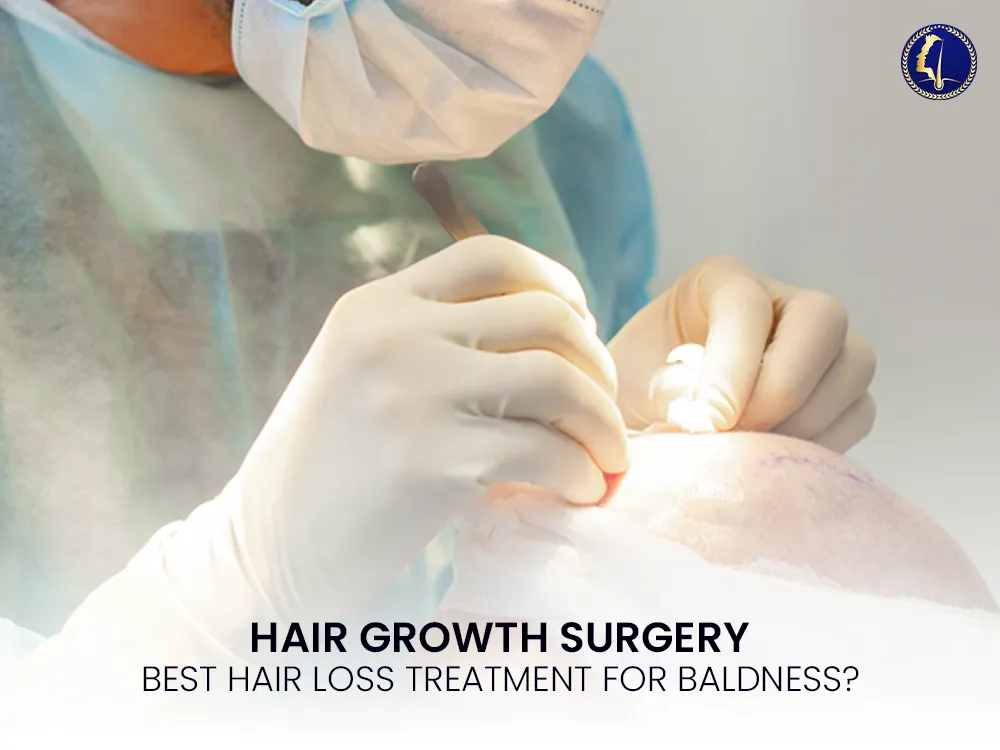
Hair Growth Surgery – Hair loss is a common concern affecting millions of people worldwide. It can significantly impact one’s self-esteem and quality of life. For those experiencing severe hair loss or baldness, hair growth surgery offers an effective and lasting solution. Understanding Hair Growth Surgery Hair growth surgery, commonly referred to as hair transplantation, involves transferring hair follicles from one area of the body (the donor site) to the bald or thinning area (the recipient site). It is a minimally invasive procedure aimed at restoring natural hair growth. Medical Terminology Explained: Follicular Unit Transplantation (FUT): A surgical method where a strip of scalp is removed to harvest hair follicles. Follicular Unit Extraction (FUE): A technique that involves extracting individual hair follicles directly from the donor area. Donor Site: The area on the scalp, usually the back or sides, where hair follicles are taken. Recipient Site: The bald or thinning area where the follicles are implanted. Androgenetic Alopecia: The medical term for hereditary hair loss, often referred to as male or female pattern baldness. What Causes Hair Loss? 1. Genetics Hereditary hair loss, or androgenetic alopecia, is the most common cause of baldness in both men and women. 2. Hormonal Imbalances Conditions like hypothyroidism or polycystic ovary syndrome (PCOS) can lead to hair thinning or shedding. 3. Medical Conditions Diseases such as alopecia areata, lupus, or scalp infections may trigger hair loss. 4. Lifestyle Factors Poor diet, excessive stress, and overuse of hairstyling products can exacerbate hair loss. 5. Aging Hair density naturally decreases with age, leading to visible thinning. Types of Hair Growth Surgery 1. Follicular Unit Transplantation (FUT) This traditional method involves removing a strip of scalp from the donor area to extract hair follicles. These follicles are then transplanted to the recipient site. Advantages: High graft yield. Suitable for advanced baldness. Disadvantages: Linear scar at the donor site. Longer recovery time. 2. Follicular Unit Extraction (FUE) In this modern technique, individual follicles are extracted using a micro-punch tool and transplanted to the recipient area. Advantages: No visible scarring. Faster recovery time. Disadvantages: Time-consuming. May require multiple sessions for extensive baldness. 3. Robotic Hair Transplantation Advanced robotic systems like ARTAS assist surgeons in precise follicle extraction and placement. Advantages: Increased accuracy. Minimal human error. Disadvantages: High cost. Limited availability. 4. Direct Hair Implantation (DHI) This advanced method uses a specialized implanter pen to place hair follicles directly into the scalp without prior incision. Advantages: Natural-looking results. Faster recovery. Disadvantages: Expensive. Benefits of Hair Growth Surgery Permanent Solution: Transplanted hair is resistant to hair loss and provides long-lasting results. Natural Appearance: Modern techniques ensure that transplanted hair blends seamlessly with existing hair. Minimally Invasive: Procedures like FUE and DHI have minimal downtime. Boosts Confidence: Restoring a full head of hair enhances self-esteem and social confidence. Post-Surgery Care Follow Medical Advice: Adhere to your surgeon’s instructions regarding wound care and medication. Avoid Strenuous Activities: Limit physical exertion for at least two weeks post-surgery. Use Gentle Hair Products: Avoid harsh shampoos and styling products during the recovery period. Be Patient: Hair growth typically starts 3-4 months post-surgery, with full results visible after 12 months. 5 Frequently Asked Questions (FAQs) 1. Who is a Good Candidate for Hair Growth Surgery? Individuals with stable hair loss, sufficient donor hair, and good overall health are ideal candidates. Consultation with a specialist is essential. 2. Is Hair Transplantation Painful? The procedure is performed under local anesthesia, making it virtually painless. Mild discomfort during recovery is manageable with prescribed medications. 3. How Long Does the Surgery Take? The duration depends on the method and extent of hair loss but generally ranges from 4 to 8 hours. 4. Are There Side Effects? Common side effects include temporary swelling, redness, and mild itching at the donor and recipient sites. Rarely, infections or scarring may occur. 5. How Much Does Hair Growth Surgery Cost? The cost varies based on the technique, number of grafts, and geographic location, ranging from $4,000 to $15,000 on average. Suggested Treatment Plan for Baldness Step 1: Consultation Schedule an appointment with a certified dermatologist or hair restoration surgeon to assess your hair loss and determine the best treatment option. Step 2: Choose the Right Procedure Based on your needs, decide between FUT, FUE, or advanced options like DHI or robotic transplantation. Step 3: Prepare for Surgery Follow pre-surgery instructions, including avoiding alcohol, smoking, and certain medications. Step 4: Post-Surgery Care Maintain scalp hygiene, avoid sun exposure, and attend follow-up appointments to monitor progress. Final Thoughts Hair growth surgery has revolutionized the way we treat baldness, offering a permanent and natural-looking solution. With advancements in techniques like FUE, DHI, and robotic transplantation, individuals can now regain their hair and confidence with minimal discomfort. If you’re considering hair restoration, consult a specialist to explore your options and embark on a journey toward a fuller head of hair.
What Is Alopecia Areata: Treat Hair Loss & What Caused It? (2025)
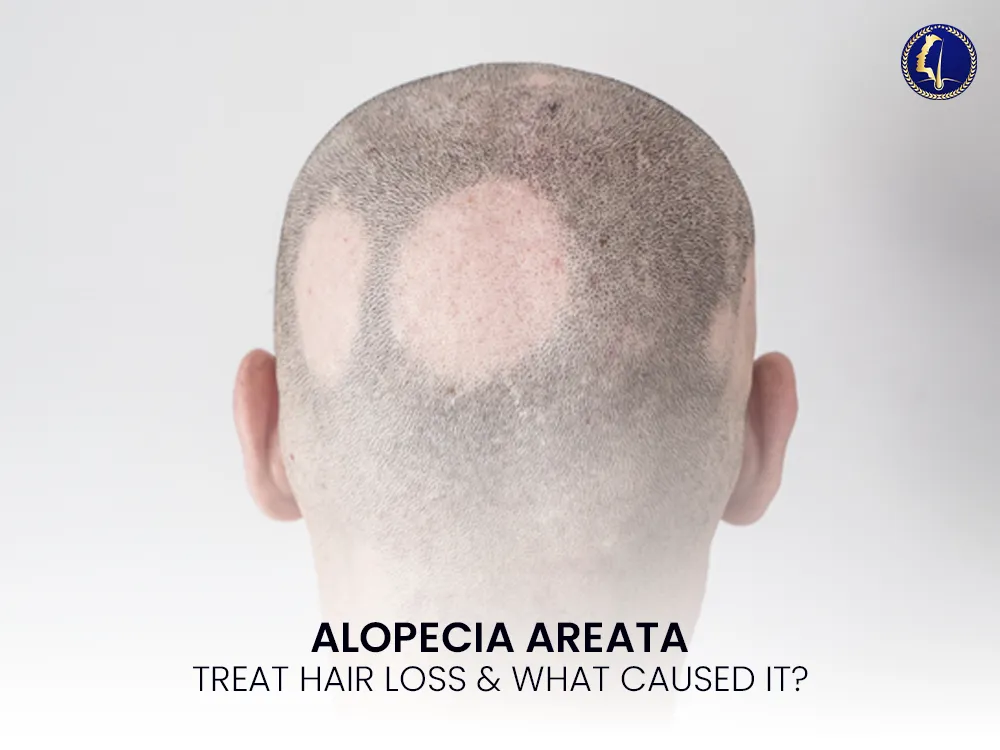
Alopecia areata is a chronic, non-scarring autoimmune disorder characterized by sudden, patchy hair loss. It occurs when the immune system mistakenly attacks hair follicles, leading to an interruption in hair growth. This condition can affect individuals of any age, gender, or ethnicity and often presents as smooth, round bald patches on the scalp or other parts of the body. Causes of Alopecia Areata The pathogenesis of alopecia areata involves an autoimmune response in which T lymphocytes target the hair follicle as a perceived threat. This immune activity disrupts the hair growth cycle, causing follicles to enter a resting phase prematurely and shed hair. Several factors are believed to contribute to its onset: Autoimmune dysfunction: Central to the condition, the immune system identifies hair follicle cells as foreign, triggering inflammation and hair loss. Genetic predisposition: Individuals with a family history of autoimmune disorders such as vitiligo, thyroid disease, or type 1 diabetes have an increased risk. Environmental triggers: Emotional stress, viral infections, or hormonal changes may precipitate or worsen the condition in predisposed individuals. Clinical Features and Diagnosis Alopecia areata typically presents as well-defined, circular areas of hair loss on the scalp. Other signs may include: Sudden hair shedding without associated pain or inflammation Loss of facial hair, eyebrows, or eyelashes in some cases Nail changes such as pitting, ridging, or brittleness Total hair loss (alopecia totalis) or complete body hair loss (alopecia universalis) in severe forms Diagnosis is usually clinical, based on history and physical examination. In uncertain cases, a scalp biopsy may be performed to confirm the autoimmune nature of follicular disruption. Medical Treatments for Alopecia Areata Treatment of alopecia areata depends on the extent of hair loss, duration, and patient preference. Although there is no definitive cure, many individuals experience regrowth with appropriate management. Treatment options include: Intralesional corticosteroids: Injected directly into affected areas to suppress local inflammation and stimulate follicular regrowth. Topical minoxidil (5%): Often used as adjunctive therapy to prolong the anagen phase and support regrowth. Topical or systemic corticosteroids: Prescribed in more extensive or rapidly progressing cases. JAK inhibitors (e.g., tofacitinib, ruxolitinib): Target specific immune pathways involved in the disease. These are considered for patients with moderate to severe or recalcitrant alopecia. Platelet-rich plasma (PRP) therapy: Autologous treatment that introduces concentrated growth factors to enhance follicular recovery. Supportive and Adjunctive Care In addition to pharmacological interventions, lifestyle and supportive strategies may improve patient outcomes: Stress reduction techniques, including mindfulness, counseling, or behavioral therapy Nutritional optimization, focusing on biotin, zinc, iron, and vitamin D Scalp care using gentle, non-irritating products Use of cosmetic aids such as wigs or scalp micropigmentation for aesthetic restoration Prognosis and Recurrence The prognosis of alopecia areata is variable. In many patients, hair regrows spontaneously or with treatment. However, recurrence is common, and some may progress to more severe forms. Early intervention often improves the chances of regrowth. Frequently Asked Questions Is alopecia areata reversible?Yes, in many cases. Hair regrowth is possible with or without treatment, particularly in mild or early-stage cases. Can children be affected by alopecia areata?Yes. The condition can begin in childhood and may require long-term management. Is alopecia areata contagious?No. It is an autoimmune disorder and cannot be transmitted through physical contact. Is PRP effective for alopecia areata?PRP can be beneficial in certain cases, especially when used alongside conventional medical treatments. It is not a standalone cure but may enhance follicular function. Can lifestyle changes help?Lifestyle changes such as reducing stress, maintaining a healthy diet, and avoiding scalp trauma can support recovery, although they are not curative alone. Conclusion Alopecia areata is a complex but manageable condition. Advances in immunotherapy and regenerative medicine offer hope for more effective and lasting results. Patients experiencing unexplained hair loss should seek professional evaluation to determine the most suitable course of treatment. For patients seeking medical advice or intervention, Glojas Aesthetic Clinic in Kuala Lumpur provides evidence-based, personalized care for alopecia and other forms of hair loss through a medically supervised team of licensed professionals.
Hairline Transplant: The Best Option for Hair Restoration? (2025)
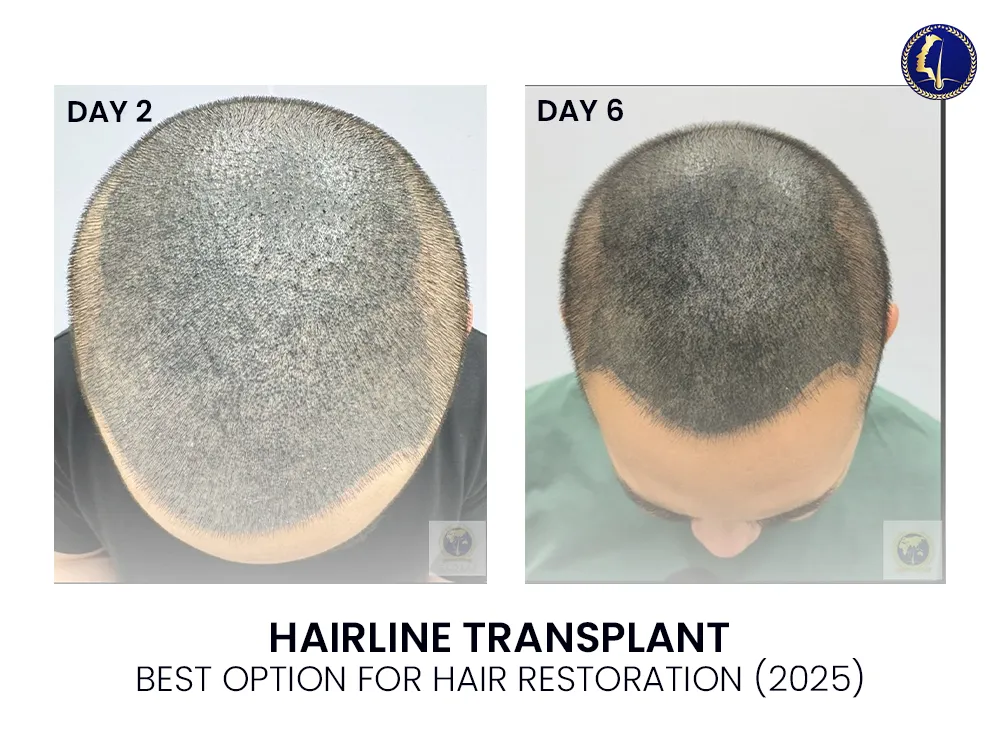
Hairline Transplant Hair Transplant also known as Hairline transplant is a type of hair restoration procedure that focuses on reshaping or restoring hair to the hairline, typically in cases where it has receded or thinned due to factors such as genetics, aging, or hair loss conditions like male or female pattern baldness. The procedure involves transplanting healthy hair follicles from the donor area (usually the back or sides of the scalp) to the thinning or receding areas along the hairline. Hairline Transplant Procedure The procedure involves several key steps: Consultation and Assessment: Before the transplant, the doctor will evaluate your hair loss, scalp condition, and overall health to determine whether you’re a good candidate for the procedure. This might include a physical exam and blood tests to assess any underlying medical conditions. Donor Hair Harvesting: There are two primary methods for harvesting hair follicles: Follicular Unit Transplantation (FUT): A strip of scalp is removed from the donor area, and individual hair follicles are then transplanted to the recipient area. Follicular Unit Extraction (FUE): Hair follicles are individually harvested from the donor area using a tiny punch tool, leaving minimal scarring. Implantation: After harvesting the follicles, they are carefully implanted into the thinning or balding areas. The surgeon creates small incisions and places each follicle to ensure a natural hairline. Post-Procedure Care: After the procedure, you may experience some swelling, redness, or discomfort, but these symptoms typically subside within a few days. The transplanted hair will shed within 2-3 weeks, but new hair growth should appear within 3-6 months. Results: The full results of a hairline transplant may take 12-18 months to fully manifest. However, the new hair should be thicker, healthier, and permanent. Types of Hair Transplant Surgeries: FUE vs FUT Feature FUE (Follicular Unit Extraction) FUT (Follicular Unit Transplantation) Procedure Individual hair follicles are extracted and transplanted one by one. A strip of skin is removed from the donor area, then hair follicles are dissected and transplanted. Scarring Minimal scarring, typically tiny dot-like scars where follicles are extracted. Linear scar at the donor site where the strip of skin was removed. Recovery Time Faster recovery, typically 5-7 days for initial healing. Longer recovery time, around 10-14 days for initial healing. Hair Density Generally provides lower density in one session, multiple sessions may be needed for larger areas. Can transplant a larger number of follicles in one session, resulting in higher density. Pain Level Minimal discomfort, usually local anesthesia is used. Slightly more discomfort due to the strip removal, but still typically done with local anesthesia. Procedure Duration Longer procedure (6-8 hours) due to individual follicle extraction. Shorter procedure (4-6 hours) since it involves removing a strip. Ideal Candidates Best for those with small to moderate hair loss or those who want minimal scarring. Best for those with extensive hair loss and those willing to accept a linear scar. Results Natural-looking results with minimal visible scarring. Also provides natural-looking results, but with a visible scar at the donor site. Cost Generally more expensive due to the detailed, labor-intensive process. Typically less expensive compared to FUE, as fewer hours are needed for the procedure. Both techniques have their benefits, and the best choice depends on factors such as the degree of hair loss, budget, and personal preferences. Causes of Hair Loss Before diving into the benefits of hairline transplants, it’s essential to understand the underlying causes of hair loss. Several factors can contribute to hair thinning and baldness: Genetics (Androgenetic Alopecia): The most common cause of hair loss is heredity. Known as male-pattern or female-pattern baldness, this condition is linked to hormones and genetics, typically leading to gradual thinning of hair around the temples and crown. Hormonal Imbalances: Hormonal changes due to pregnancy, menopause, or thyroid disorders can lead to significant hair loss in women. Aging: As we age, hair growth naturally slows down, and hair follicles may become smaller, producing thinner hair or none at all. Stress: Severe physical or emotional stress can lead to a type of hair loss called telogen effluvium, where a large number of hair follicles enter the resting phase, leading to hair shedding. Nutritional Deficiencies: Poor diet or a lack of essential vitamins and minerals (like iron, biotin, and vitamin D) can weaken hair and lead to hair loss. Medical Conditions: Autoimmune diseases such as alopecia areata, fungal infections, or scalp conditions like dandruff can also contribute to hair thinning and loss. Male Hair Loss Pattern (Norwood Scale) Stage Description Hair Loss Pattern I Minimal or No Hair Loss Small, minimal recession at the temples or no noticeable hair loss. II Mild Hair Loss Receding hairline at the temples. III Moderate Hair Loss Noticeable recession at the temples, forming an “M” shape. IV Advanced Hair Loss Larger hair loss at the temples and crown, leaving a thin strip. V Severe Hair Loss Further thinning of the front and crown, forming a wider bald spot. VI Very Severe Hair Loss Significant hair loss at the front and crown, leaving a narrow strip of hair. VII Complete Hair Loss Almost total hair loss, with a small rim of hair around the sides and back. Hair Restoration Options Treatment Effectiveness Duration Cost Side Effects Hairline Transplant High effectiveness, long-lasting results Permanent (new hair grows after 6 months) RM 10,000 – RM 30,000 (depending on the clinic and country) Swelling, redness, infection risk Medications (Finasteride, Minoxidil) Moderate effectiveness, slow results Ongoing (requires long-term use) RM 200 – RM 300 monthly Possible sexual side effects (finasteride), scalp irritation (minoxidil) Platelet-Rich Plasma (PRP) Therapy Moderate to high effectiveness, boosts hair growth Temporary, requires follow-ups every few months RM 1,500 – RM 3,000 per session Mild discomfort, swelling Hair Wigs or Extensions Immediate but temporary solution Non-permanent RM 500 – RM 3,000 (depending on quality) Can be uncomfortable, may damage natural hair Hairline Transplant Cost In Malaysia Generally, the price of FUE Hair Transplants in Malaysia ranges from RM5,500 to RM15,000, with larger procedures costing more due to
10 Surprising Benefits of Visiting a Top Hair Clinic

Hair loss is a sensitive issue that affects millions of people worldwide, impacting their self-esteem and overall quality of life. Finding the right solution can be overwhelming, but one of the most effective steps you can take is visiting a reputable hair clinic. These specialized centers offer a range of treatments that can help restore not just your hair but your confidence as well. In this article, we’ll explore the surprising benefits of visiting a top hair clinic and why it could be the best decision you make for your hair health. Understanding What a Hair Clinic Can Offer A hair clinic is a specialized medical center focused on diagnosing and treating hair and scalp issues. Whether you’re dealing with thinning hair, bald patches, or any other hair-related concerns, these clinics provide expert care tailored to your specific needs. The services offered at a hair clinic often range from hair transplants to non-surgical treatments, making them a one-stop solution for anyone struggling with hair loss. The Importance of Professional Diagnosis One of the most significant advantages of visiting a hair clinic is the access to professional diagnosis. Unlike over-the-counter products or home remedies, a hair clinic offers a thorough assessment of your scalp and hair condition. This diagnosis is crucial because it helps pinpoint the underlying causes of your hair loss, whether they’re genetic, hormonal, or due to lifestyle factors. With this information, a hair clinic can tailor a treatment plan that directly targets your specific issue. Top Treatments Available at Hair Clinics 1. Hair Transplant Surgery For those experiencing significant hair loss, hair transplant surgery is often the most effective solution. This procedure involves relocating hair follicles from one part of your body to the areas experiencing thinning or balding. The results are usually permanent, and when done by a skilled professional at a hair clinic, the outcome can look completely natural. 2. Platelet-Rich Plasma (PRP) Therapy PRP therapy is a cutting-edge treatment offered at many top hair clinics. This non-surgical procedure involves injecting platelet-rich plasma from your blood into your scalp. The growth factors in the plasma stimulate hair follicles, encouraging new hair growth. PRP therapy is particularly beneficial for those in the early stages of hair loss. 3. Laser Hair Therapy Laser hair therapy is a non-invasive treatment that uses low-level laser light to stimulate hair growth. It’s an excellent option for individuals who are not ready for surgery or want to complement other treatments. Many hair clinics offer this therapy as part of a comprehensive hair restoration program. 4. Scalp Micropigmentation (SMP) SMP is a non-surgical procedure where tiny dots of pigment are tattooed onto the scalp to mimic the appearance of hair follicles. This treatment is ideal for individuals who have shaved heads or want to create the illusion of thicker hair. It’s a popular service offered at many hair clinics due to its effectiveness and natural-looking results. 5. Custom Hair Care Products In addition to surgical and non-surgical treatments, hair clinics often provide custom hair care products. These products are formulated based on your specific hair and scalp condition, offering a personalized approach to hair care that you won’t find with over-the-counter alternatives. Why Choose a Hair Clinic Over DIY Solutions? Professional Expertise One of the main reasons to choose a hair clinic over DIY solutions is the expertise they offer. The specialists at hair clinics have extensive training and experience in treating hair loss. This professional expertise ensures that you receive the most effective treatment for your condition, minimizing the risk of further damage. Advanced Technology Hair clinics use the latest technology in hair restoration, providing treatments that are not available to the general public. These advanced technologies often yield better and faster results compared to traditional methods. Whether it’s state-of-the-art laser therapy or the latest in hair transplant techniques, a hair clinic is equipped to offer the best possible care. Comprehensive Care Hair loss can be complex, with multiple contributing factors. A hair clinic provides comprehensive care that addresses not just the symptoms but also the root causes of hair loss. This holistic approach ensures that your treatment plan is thorough and effective, offering long-term solutions rather than quick fixes. What to Expect During Your First Visit to a Hair Clinic Visiting a hair clinic for the first time can be a bit daunting, but understanding what to expect can ease your nerves. Your first visit typically starts with a consultation, where a specialist will discuss your hair concerns and medical history. This is followed by a scalp analysis, which helps in diagnosing the underlying issues. Based on this diagnosis, the specialist will recommend a treatment plan tailored to your needs. Most clinics will also provide you with information on the expected outcomes, costs, and any necessary follow-up treatments. Success Stories: Real-Life Transformations Many hair clinics showcase success stories of individuals who have undergone treatments with remarkable results. These transformations are not just about restoring hair but also about rebuilding confidence and improving overall well-being. Seeing these real-life examples can be incredibly motivating and reassuring for anyone considering treatment. FAQs About Hair Clinics What is the cost of a hair transplant at a hair clinic? The cost of a hair transplant varies depending on the clinic, the extent of the hair loss, and the specific procedure used. On average, you can expect to pay between $4,000 and $15,000. It’s important to consult with a hair clinic for an accurate estimate based on your needs. Are hair clinic treatments permanent? Some treatments, like hair transplants, offer permanent results, while others, like PRP therapy, may require ongoing sessions to maintain the effects. Your specialist will explain the expected duration of results during your consultation. How do I choose the right hair clinic? Choosing the right hair clinic involves researching the clinic’s reputation, the qualifications of its specialists, and the range of treatments offered. It’s also helpful to read reviews and testimonials from previous patients. Is it safe to undergo treatment
Tanam Rambut Wanita: Rawat Keguguran Rambut Dengan Berkesan
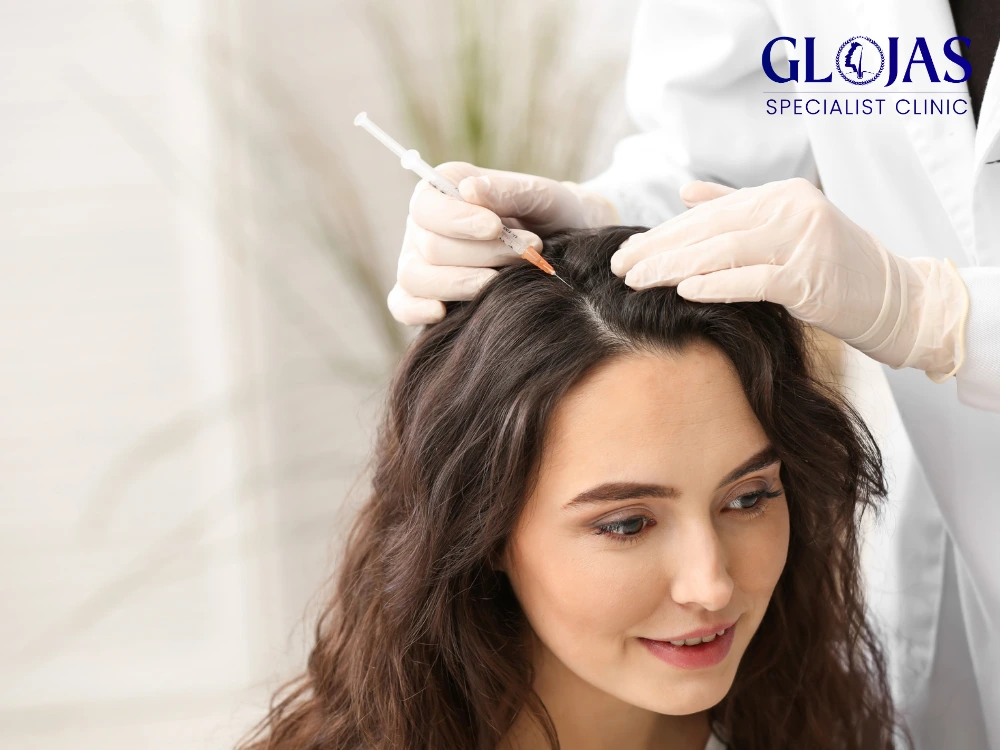
Keguguran rambut merupakan masalah yang sering dihadapi oleh wanita di seluruh dunia. Ia boleh disebabkan oleh pelbagai faktor seperti genetik, hormon, tekanan, atau keadaan kesihatan tertentu. Masalah ini bukan sahaja mempengaruhi penampilan fizikal, tetapi juga boleh merendahkan keyakinan diri seseorang. Oleh itu, prosedur tanam rambut wanita telah menjadi pilihan popular bagi mereka yang ingin memulihkan rambut yang hilang dan mendapatkan semula penampilan yang lebih yakin. Dalam artikel ini, kita akan membincangkan secara terperinci tentang tanam rambut wanita, proses yang terlibat, kos, dan faktor-faktor yang perlu dipertimbangkan. Apa Itu Tanam Rambut Wanita? Tanam rambut wanita merujuk kepada prosedur pemindahan folikel rambut dari kawasan donor, yang biasanya terletak di belakang kepala, ke kawasan yang mengalami keguguran rambut. Proses ini bertujuan untuk merangsang pertumbuhan rambut baru di kawasan yang jarang atau botak. Dalam dunia perubatan estetik, terdapat beberapa teknik yang digunakan untuk tanam rambut wanita, termasuk: 1. Follicular Unit Extraction (FUE) FUE adalah teknik yang paling popular dalam tanam rambut wanita. Dalam kaedah ini, folikel rambut diambil satu persatu dari kawasan donor menggunakan alat khas. Teknik ini tidak memerlukan sayatan besar dan menyebabkan parut yang minimum, menjadikannya pilihan yang menarik bagi banyak wanita. 2. Follicular Unit Transplantation (FUT) FUT, juga dikenali sebagai teknik jalur, melibatkan pengambilan jalur kulit yang mengandungi folikel rambut dari kawasan donor. Walaupun kaedah ini boleh meninggalkan parut yang lebih besar, ia biasanya lebih sesuai untuk wanita yang memerlukan jumlah folikel yang lebih banyak. 3. Direct Hair Implantation (DHI) DHI adalah teknik yang lebih baru di mana folikel rambut yang diambil akan ditanam secara terus ke dalam kulit kepala tanpa perlu membuat sayatan terlebih dahulu. Teknik ini membolehkan doktor menanam folikel dengan lebih tepat dan mengurangkan masa pemulihan. Kenapa Wanita Memilih Tanam Rambut? Terdapat banyak alasan mengapa wanita memilih untuk menjalani tanam rambut wanita: 1. Mengatasi Keguguran Rambut Masalah keguguran rambut adalah isu serius yang boleh mempengaruhi wanita pada sebarang usia. Prosedur ini menawarkan penyelesaian yang berkesan untuk merawat masalah ini dan membantu wanita mendapatkan semula keyakinan mereka. 2. Meningkatkan Penampilan Rambut yang lebat dan sihat sering kali menjadi simbol kecantikan dan daya tarikan. Dengan tanam rambut wanita, wanita dapat memulihkan penampilan mereka dan merasa lebih yakin dalam penampilan diri. 3. Hasil yang Kekal dan Semulajadi Salah satu kelebihan utama tanam rambut wanita adalah hasilnya yang tahan lama. Jika prosedur dilakukan dengan betul, rambut yang ditanam akan tumbuh seperti rambut semulajadi dan akan kekal selama bertahun-tahun. 4. Prosedur yang Selamat dan Berkesan Dengan kemajuan dalam teknologi perubatan, prosedur tanam rambut wanita kini lebih selamat dan memberikan hasil yang memuaskan. Teknik yang digunakan membolehkan pemindahan rambut dilakukan dengan risiko yang minimum. Proses Tanam Rambut Wanita Prosedur tanam rambut wanita melibatkan beberapa langkah yang penting untuk memastikan kejayaan. Berikut adalah panduan umum mengenai proses ini: 1. Konsultasi Awal Sesi konsultasi adalah langkah pertama yang perlu dilakukan sebelum menjalani prosedur. Dalam sesi ini, doktor akan menilai keadaan rambut dan kulit kepala pesakit. Mereka akan membincangkan sejarah perubatan, harapan pesakit, serta risiko dan kos yang terlibat. Ini adalah masa yang baik untuk bertanya tentang sebarang kebimbangan atau keraguan yang mungkin anda ada. 2. Persediaan Sebelum Prosedur Sebelum menjalani tanam rambut wanita, pesakit akan diberikan arahan mengenai persediaan. Ini termasuk mengelakkan pengambilan ubat tertentu yang boleh meningkatkan risiko pendarahan, serta memastikan pesakit berada dalam keadaan kesihatan yang baik. Pesakit juga dinasihatkan untuk tidak merokok atau mengelakkan alkohol beberapa hari sebelum prosedur. 3. Pelaksanaan Prosedur Prosedur tanam rambut wanita biasanya dilakukan di bawah anestesia tempatan. Doktor akan memulakan dengan mengambil folikel rambut dari kawasan donor. Dalam teknik FUE, folikel diambil satu persatu menggunakan alat khas. Sementara itu, dalam teknik FUT, sekeping kulit yang mengandungi folikel rambut akan diambil dan dipisahkan. Setelah folikel diambil, doktor akan menyiapkan kawasan yang akan ditanam. Ini melibatkan membuat sayatan kecil di kawasan tersebut dan menanam folikel rambut dengan teliti. Prosedur ini boleh mengambil masa antara 4 hingga 8 jam, bergantung kepada jumlah folikel yang ditanam. 4. Pemulihan Setelah prosedur selesai, pesakit akan diberi arahan penjagaan pasca-pembedahan. Ini termasuk cara menjaga kawasan yang ditanam, ubat-ubatan yang perlu diambil, dan aktiviti yang perlu dielakkan dalam tempoh pemulihan. Pemulihan penuh biasanya mengambil masa antara beberapa minggu hingga beberapa bulan. Kos Tanam Rambut Wanita Salah satu pertimbangan utama sebelum menjalani tanam rambut wanita adalah kos. Kos ini boleh berbeza-beza bergantung kepada beberapa faktor, termasuk lokasi klinik, pengalaman doktor, dan jumlah folikel yang ingin ditanam. Secara amnya, kos tanam rambut wanita di Malaysia boleh berbeza antara RM3,000 hingga RM15,000 atau lebih. 1. Lokasi Klinik Klinik yang terletak di bandar besar, seperti Kuala Lumpur, biasanya mengenakan kos yang lebih tinggi berbanding dengan klinik di kawasan luar bandar. Ini disebabkan oleh kos operasi yang lebih tinggi di kawasan bandar. 2. Kelayakan dan Pengalaman Doktor Doktor tanam rambut yang mempunyai pengalaman dan latar belakang yang baik dalam penanaman rambut biasanya mengenakan bayaran yang lebih tinggi. Memilih doktor yang berpengalaman adalah penting untuk memastikan prosedur dilakukan dengan selamat dan hasil yang memuaskan. 3. Kaedah Prosedur Seperti yang disebutkan sebelumnya, kaedah FUE biasanya lebih mahal daripada FUT. Kos juga boleh berbeza bergantung kepada jumlah folikel yang ingin ditanam. 4. Perkhidmatan Tambahan Beberapa klinik menawarkan perkhidmatan tambahan yang boleh mempengaruhi kos tanam rambut wanita. Ini termasuk rawatan selepas pembedahan, ubat penahan sakit, dan sesi susulan. Penjagaan Selepas Tanam Rambut Wanita Setelah menjalani prosedur tanam rambut wanita, penjagaan yang betul adalah penting untuk memastikan pertumbuhan rambut yang sihat. Berikut adalah beberapa langkah penjagaan yang perlu diambil: Elakkan Menggaru atau Menyentuh Kawasan Ditanam: Selepas prosedur, elakkan daripada menggaru atau menyentuh kawasan yang ditanam untuk mengelakkan jangkitan dan merosakkan folikel rambut yang baru ditanam. Menggunakan Produk yang Disyorkan: Ikuti arahan doktor tentang penggunaan produk penjagaan selepas pembedahan. Ini termasuk syampu dan losyen yang mungkin diperlukan untuk membantu proses penyembuhan. Pemakanan yang Seimbang: Makanan yang kaya dengan vitamin dan mineral penting dapat membantu mempercepatkan pemulihan. Pastikan anda makan makanan yang seimbang dan mencukupi. Elakkan Aktiviti Berat: Dalam beberapa minggu pertama selepas pembedahan, elakkan daripada melakukan aktiviti berat yang boleh menyebabkan tekanan pada kawasan yang ditanam. Pemeriksaan Susulan: Hadiri semua sesi pemeriksaan susulan yang
10 Proven Benefits of Hair Implants: Transform Your Confidence Today
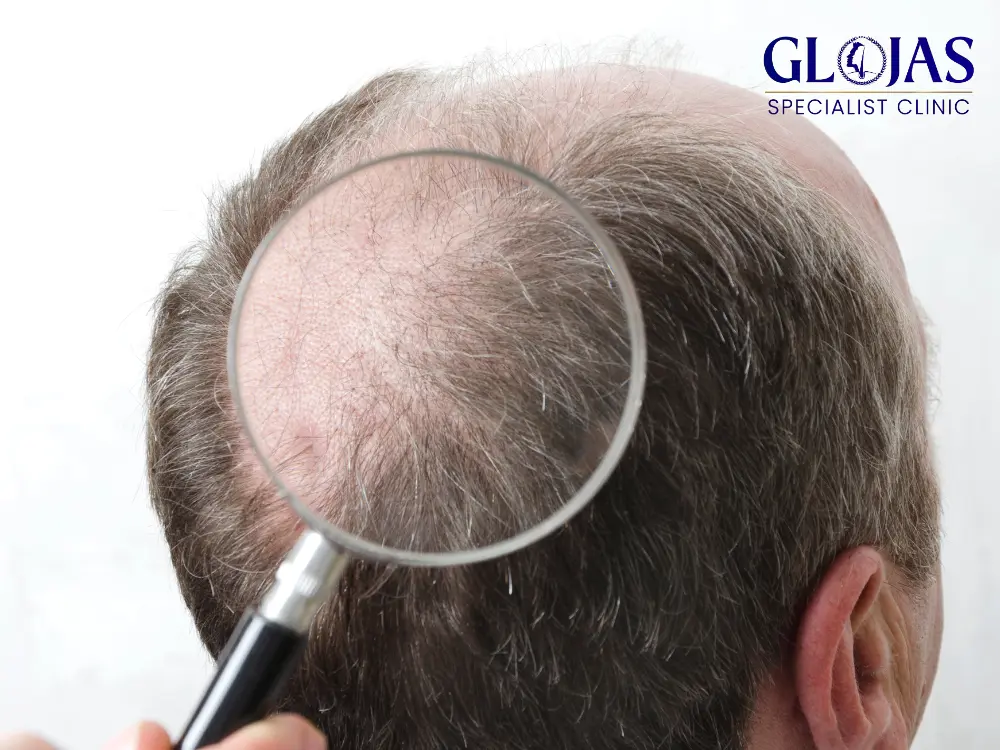
Hair loss is a common issue that affects millions of people worldwide. Whether it’s due to genetics, stress, or medical conditions, losing hair can have a significant impact on one’s self-esteem and overall confidence. Fortunately, advancements in medical technology have made hair implants an effective solution for those looking to regain their hair and confidence. In this article, we’ll explore the numerous benefits of hair implants, how the procedure works, and why it might be the right choice for you. What Are Hair Implants? Hair implants, also known as hair transplantation, involve moving hair follicles from one part of the body (usually the back of the scalp) to areas where hair is thinning or completely bald. This procedure has evolved over the years, becoming more sophisticated and yielding natural-looking results. Two main techniques are commonly used in hair implants: Follicular Unit Transplantation (FUT) and Follicular Unit Extraction (FUE). Follicular Unit Transplantation (FUT): This technique involves removing a strip of scalp from the donor area, dissecting it into individual follicular units, and then implanting them into the recipient area. Follicular Unit Extraction (FUE): In FUE, individual hair follicles are extracted directly from the donor area and implanted into the thinning or bald areas. FUE is less invasive than FUT and leaves minimal scarring. Benefits of Hair Implants Hair implants offer a range of benefits that go beyond just restoring hair. Below are some of the most compelling reasons to consider this procedure: 1. Permanent Solution to Hair Loss One of the most significant advantages of hair implants is that they provide a permanent solution to hair loss. Unlike temporary fixes such as wigs or hairpieces, hair implants offer a long-lasting solution that can dramatically improve your appearance and self-confidence. 2. Natural-Looking Results Modern hair implant techniques, particularly FUE, allow for natural-looking results. The transplanted hair grows just like your natural hair, blending seamlessly with the rest of your scalp. This makes it nearly impossible for others to detect that you’ve undergone a hair restoration procedure. 3. Minimal Downtime and Recovery Advancements in hair implant procedures have made the process less invasive, leading to quicker recovery times. Most patients can return to their normal activities within a few days, with only minimal discomfort during the recovery period. 4. Improved Self-Esteem and Confidence Hair loss can take a toll on your self-esteem, leading to anxiety and social withdrawal. Hair implants can help restore not just your hair but also your confidence, allowing you to feel more comfortable and secure in your appearance. 5. Cost-Effective in the Long Run While the upfront cost of hair implants might seem high, it’s a cost-effective solution in the long run. The permanent nature of the procedure means you won’t need to spend money on ongoing treatments, products, or temporary solutions that only provide short-term results. 6. Versatility in Hairstyling Once your hair has grown back after the implant procedure, you’ll have the freedom to style it however you like. Whether you prefer a short cut, a longer style, or even coloring your hair, implants give you the flexibility to choose your look. 7. Low Maintenance Hair implants require minimal maintenance once the hair has fully grown in. Unlike wigs or hairpieces, which need regular upkeep, your new hair can be treated just like your natural hair. Regular washing, cutting, and styling are all that’s needed. 8. High Success Rate Hair implants have a high success rate, with most patients experiencing significant hair regrowth within a few months of the procedure. The success of the treatment largely depends on the skill of the surgeon and the patient’s adherence to post-operative care instructions. 9. Suitable for Both Men and Women Hair implants are not limited to men; women experiencing hair loss can also benefit from this procedure. The techniques used are effective for both genders, providing a reliable solution for thinning hair or bald spots. 10. Boosted Social and Professional Life With restored hair and confidence, many people find that their social and professional lives improve significantly. Whether it’s in job interviews, social gatherings, or dating, looking and feeling your best can open up new opportunities. How to Prepare for a Hair Implant Procedure Before undergoing a hair implant procedure, there are several steps you should take to ensure the best possible outcome: Consultation with a Specialist: It’s crucial to consult with a qualified hair restoration specialist who can assess your hair loss and recommend the best course of action. Medical Evaluation: A thorough medical evaluation will help determine if you’re a suitable candidate for hair implants. Conditions like scalp infections or blood clotting disorders may affect your eligibility. Pre-Operative Instructions: Follow any pre-operative instructions provided by your surgeon, such as avoiding certain medications, alcohol, or smoking before the procedure. Plan for Recovery Time: While the downtime is minimal, plan to take a few days off work or other activities to rest and recover. Post-Procedure Care for Hair Implants After the hair implant procedure, proper care is essential to ensure optimal results: Follow Your Surgeon’s Instructions: Adhere to all post-operative care instructions, including how to clean the scalp and when to return for follow-up visits. Avoid Physical Strain: For at least a week after the procedure, avoid strenuous physical activities that could strain the scalp. Monitor for Complications: Be vigilant for any signs of complications such as excessive swelling, pain, or infection, and contact your doctor if they occur. Patience Is Key: Hair growth after implants takes time. It can take several months before you see significant results, so patience is crucial. FAQs about Hair Implants Q1: Are hair implants painful? The procedure is performed under local anesthesia, so pain during the surgery is minimal. Some discomfort may be experienced during recovery, but it’s generally manageable with over-the-counter pain relief. Q2: How long does the hair implant procedure take? Depending on the extent of the hair loss, the procedure can take anywhere from 4 to 8 hours. Q3: Can hair implants fail?